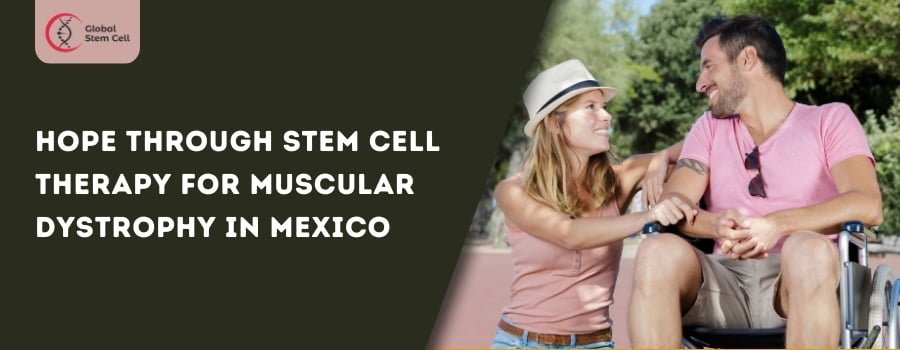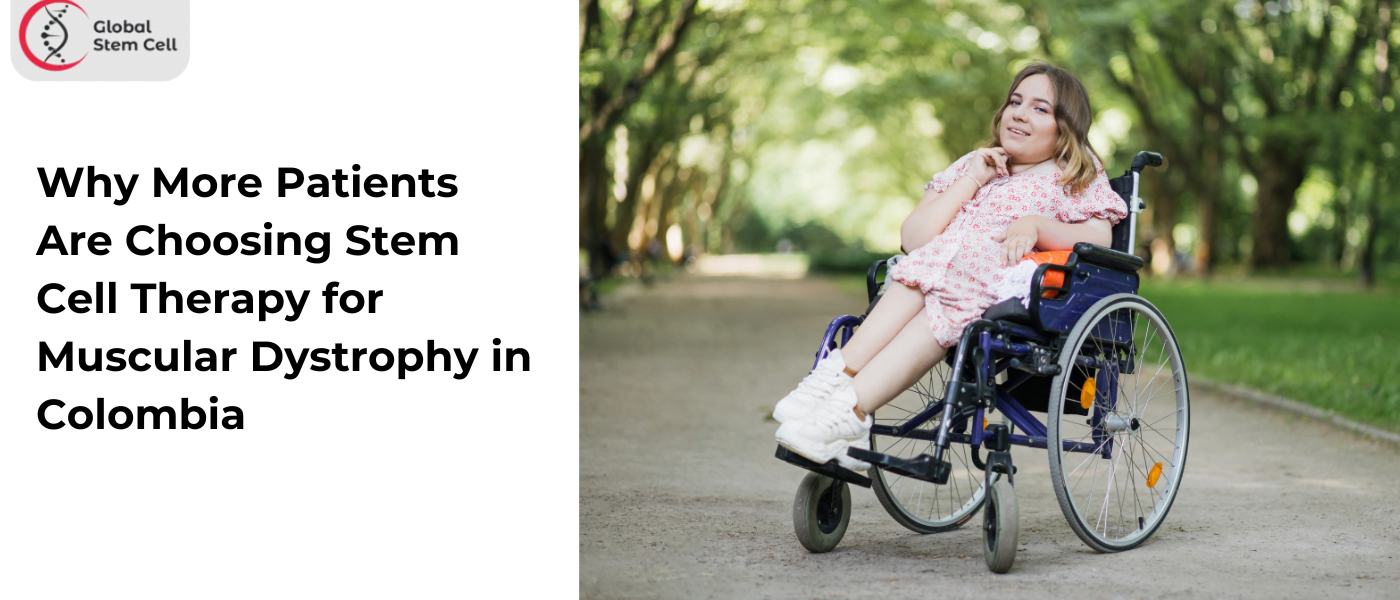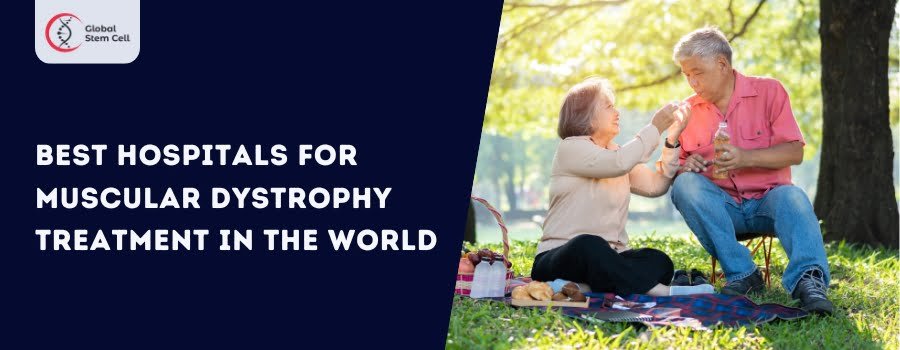
Mexico’s Pioneering Role in Advancing Stem Cell Treatment for Muscular Dystrophy
Table of Content
Muscular dystrophy, a group of genetic disorders characterized by progressive muscle weakness and degeneration, has long been a challenge for the medical community. However, in recent years, Mexico has emerged as a global leader in advancing stem cell treatment for muscular dystrophy.
This blog post delves into the groundbreaking developments taking place in Mexico, exploring the innovative approaches, research initiatives, and the transformative impact these advancements are having on the lives of those affected by muscular dystrophy.
Understanding Muscular Dystrophy
Muscular dystrophy (MD) refers to a group of genetic disorders characterized by progressive muscle degeneration and weakness. It is caused by mutations in genes responsible for the structure and function of muscle fibers. There are various types of muscular dystrophy, each with its own specific genetic mutations and clinical features.
Here are some key points to help you understand muscular dystrophy:
Genetic Basis: Muscular dystrophy is primarily a genetic disorder. Most forms are inherited, meaning they are passed down from parents to their children. The inheritance patterns can be autosomal dominant, autosomal recessive, or linked to the X chromosome, depending on the specific type of muscular dystrophy.
Types of Muscular Dystrophy: There are several types of muscular dystrophy, with Duchenne muscular dystrophy (DMD) and Becker muscular dystrophy (BMD) being among the most common.
- Duchenne Muscular Dystrophy (DMD): This is one of the most severe forms, typically affecting males. Symptoms often appear in early childhood, and affected individuals experience progressive muscle weakness, leading to difficulties in walking, breathing, and other activities. DMD is caused by mutations in the DMD gene, which codes for the protein dystrophin.
- Becker Muscular Dystrophy (BMD): BMD is similar to DMD but generally has a later onset and progresses more slowly. It is also caused by mutations in the DMD gene, leading to a deficiency in dystrophin.
- Myotonic Dystrophy, Facioscapulohumeral Muscular Dystrophy, and Others: There are other types of muscular dystrophy, each caused by mutations in different genes. Myotonic dystrophy, for example, is characterized by myotonia (prolonged muscle contractions), while facioscapulohumeral muscular dystrophy primarily affects the face, shoulders, and upper arms.
Symptoms and Progression: Common symptoms of muscular dystrophy include muscle weakness, progressive loss of muscle mass, difficulty in walking, frequent falls, and, in some cases, cardiac and respiratory issues. The severity and progression of symptoms can vary widely among different types of muscular dystrophy and even among individuals with the same type.
Diagnosis and Treatment: Diagnosis involves a combination of clinical evaluation, genetic testing, and sometimes muscle biopsies. While there is currently no cure for muscular dystrophy, various treatments aim to manage symptoms and improve quality of life. These may include physical therapy, orthopedic interventions, respiratory support, and medications. Research is ongoing to develop potential gene therapies and other innovative approaches.
Support and Care: Individuals with muscular dystrophy require comprehensive care and support from a multidisciplinary team, including neurologists, physical therapists, respiratory therapists, and other specialists. Supportive devices such as braces, wheelchairs, and respiratory aids may be necessary as the condition progresses.
How Stem Cell Therapy helps in Muscular Dystrophy Treatment?
Stem cell therapy holds promise as a potential treatment for muscular dystrophy, although it is still considered experimental and under investigation. Here’s how stem cell therapy may help in the treatment of muscular dystrophy:
Regeneration of Muscle Tissue: Stem cells have the ability to differentiate into various cell types, including muscle cells. In the context of muscular dystrophy, stem cells may be used to replace damaged or lost muscle tissue. By introducing healthy stem cells into the affected muscles, there is the potential to promote muscle regeneration and improve muscle function.
Anti-inflammatory and Immunomodulatory Effects: Stem cells possess anti-inflammatory properties and can modulate the immune response. In muscular dystrophy, inflammation plays a role in muscle degeneration. Stem cells may help to reduce inflammation and immune-mediated damage in affected muscles, thereby slowing disease progression and preserving muscle function.
Delivery of Therapeutic Factors: Stem cells can be engineered to produce and release therapeutic factors that promote muscle growth, repair, and regeneration. These factors may include growth factors, cytokines, and other signaling molecules that support muscle health. By delivering these therapeutic factors directly to the affected muscles, stem cell therapy can potentially enhance muscle repair and function.
Potential for Gene Therapy: In some cases of muscular dystrophy, stem cells may be used as a vehicle for delivering gene therapy. Gene therapy aims to correct the underlying genetic mutations responsible for the disease.
Combination with Other Therapies: Stem cell therapy may be used in combination with other treatment modalities for muscular dystrophy, such as physical therapy, medications, and assistive devices. This multidisciplinary approach can address various aspects of the disease and optimize outcomes for patients.
Mexico’s Leading Role in Stem Cell Research
Mexico has indeed been making strides in the field of stem cell research and regenerative medicine. The country has been actively involved in both scientific research and clinical applications of stem cells. However, developments may have occurred since then, and it’s advisable to check the latest sources for the most recent information.
Here are some aspects highlighting Mexico’s involvement in stem cell research:
Clinical Trials and Applications: Mexico has been a location for various clinical trials and applications of stem cell therapies. These trials often involve investigating the safety and efficacy of stem cell treatments for conditions such as cardiovascular diseases, diabetes, and degenerative disorders.
Regulatory Environment: Mexico has established regulatory frameworks to govern stem cell research and therapies. The country’s regulatory bodies work to ensure that research and clinical applications adhere to ethical standards and safety protocols.
Research Institutions: Several research institutions and universities in Mexico are actively engaged in stem cell research. These institutions collaborate with both national and international partners to advance scientific understanding and explore potential clinical applications.
Medical Tourism: Mexico has become a destination for medical tourism, including stem cell treatments. Some clinics offer stem cell therapies for various conditions, attracting patients from around the world seeking alternative and regenerative medicine options.
Scientific Collaboration: Mexican researchers and institutions collaborate with international counterparts, contributing to the global advancement of stem cell research. Collaborations may involve sharing expertise, resources, and participating in joint research projects.
Best Stem Cell Clinics in Mexico for Muscular Dystrophy
Certainly! Here are some of the best stem cell clinics in Mexico known for treating Muscular Dystrophy:
Stem Health: Renowned for its expertise in stem cell therapy, Stem Health offers advanced treatments for various conditions, including Muscular Dystrophy. Their team of specialists provides personalized care and cutting-edge techniques to improve patients’ quality of life.
Dr. Omar Gonzalez Integra Medical Center: Led by Dr. Omar Gonzalez, a prominent figure in the field of regenerative medicine, Integra Medical Center is dedicated to providing innovative treatments for Muscular Dystrophy using stem cell therapy. Their comprehensive approach focuses on addressing the root causes of the condition and promoting tissue regeneration.
Renue Medical Centre: Renue Medical Centre is known for its holistic approach to healthcare, offering integrative treatments for Muscular Dystrophy. With a team of experienced professionals and state-of-the-art facilities, they provide personalized care plans tailored to each patient’s needs.
MexStemCells: MexStemCells is a leading stem cell clinic in Mexico, specializing in regenerative therapies for various diseases, including Muscular Dystrophy. Their multidisciplinary team utilizes advanced techniques and state-of-the-art facilities to deliver effective and safe treatments.
Progencell: Progencell is recognized for its expertise in stem cell therapy and regenerative medicine. With a focus on patient-centered care and innovation, they offer comprehensive treatments for Muscular Dystrophy aimed at improving mobility and overall function.
Benefits of Stem Cell Therapy for Muscular Dystrophy in Mexico
Here are some potential benefits of stem cell therapy for Muscular Dystrophy in Mexico:
Regeneration of Muscle Tissue: Stem cell therapy holds the potential to regenerate damaged muscle tissue in individuals with Muscular Dystrophy. By introducing healthy stem cells into the affected areas, it may stimulate the growth of new muscle cells, improving muscle function and strength.
Reduced Inflammation: Muscular Dystrophy often involves inflammation in muscle tissue. Stem cells have anti-inflammatory properties, which can help reduce inflammation and alleviate symptoms associated with the condition, such as muscle pain and stiffness.
Improved Mobility and Function: Stem cell therapy aims to enhance mobility and function in individuals with Muscular Dystrophy. By promoting muscle regeneration and repair, it may lead to improvements in movement, balance, and overall physical performance.
Slowing Disease Progression: While stem cell therapy may not cure Muscular Dystrophy, it has the potential to slow down the progression of the disease. By repairing damaged muscle tissue and promoting muscle regeneration, it may help delay the onset of symptoms and improve quality of life.
Personalized Treatment Approach: Stem cell therapy in Mexico often involves personalized treatment plans tailored to each individual’s specific needs. Clinics may utilize advanced techniques to isolate and inject stem cells directly into the affected muscle tissues, maximizing the therapeutic benefits for the patient.
Minimally Invasive Procedure: Stem cell therapy for Muscular Dystrophy in Mexico typically involves minimally invasive procedures, such as injections or infusions. This means reduced risk of complications and shorter recovery times compared to traditional surgical interventions.
Access to Experienced Specialists: Mexico is home to several reputable stem cell clinics with experienced specialists in regenerative medicine. These experts have extensive knowledge and expertise in treating Muscular Dystrophy using stem cell therapy, ensuring high-quality care for patients.
Affordability and Accessibility: Stem cell therapy in Mexico may be more affordable and accessible for individuals seeking alternative treatment options for Muscular Dystrophy. Compared to some other countries, the cost of treatment and travel expenses may be lower, making it a viable option for patients.
FAQs about Stem Cell Therapy for Muscular Dystrophy in Mexico
Is stem cell therapy a cure for Muscular Dystrophy?
While stem cell therapy has shown promise in improving symptoms and slowing disease progression, it is not considered a cure for Muscular Dystrophy. However, it may help improve quality of life and delay the onset of symptoms.
What types of stem cells are used in therapy for Muscular Dystrophy?
Different types of stem cells may be used, including mesenchymal stem cells (MSCs) and myoblasts. These cells can be sourced from various tissues, such as bone marrow, adipose tissue, or umbilical cord blood.
Are there any risks or side effects associated with stem cell therapy for Muscular Dystrophy?
While stem cell therapy is generally considered safe, there are potential risks and side effects, including infection, bleeding, and allergic reactions. Additionally, there is a theoretical risk of tumor formation, although this risk appears to be low.
How long does it take to see results from stem cell therapy for Muscular Dystrophy?
The timeframe for seeing results can vary depending on individual factors such as the severity of the condition, the type of stem cells used, and the specific treatment protocol. Some patients may experience improvements in symptoms within a few months, while others may require longer-term follow-up.
What should I expect during the stem cell therapy process?
The process typically involves an initial consultation with a healthcare provider to assess eligibility and discuss treatment options. If deemed suitable, the patient undergoes stem cell extraction, followed by the administration of stem cells through injections or infusions. Regular follow-up appointments may be scheduled to monitor progress.
Ready to explore the possibilities of stem cell therapy for Muscular Dystrophy? Take the first step towards a brighter future today. Contact us now!





